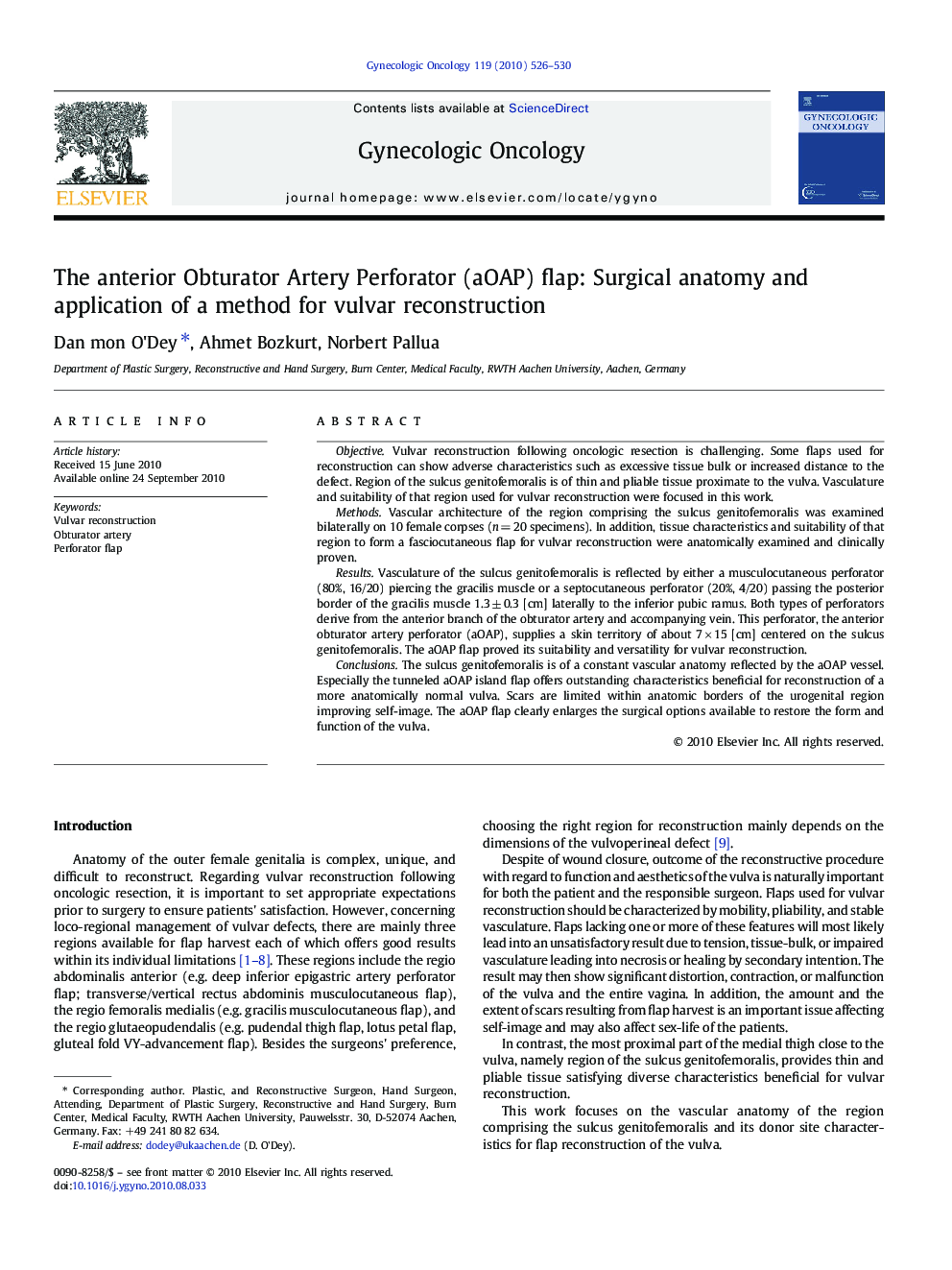| Article ID | Journal | Published Year | Pages | File Type |
|---|---|---|---|---|
| 3944036 | Gynecologic Oncology | 2010 | 5 Pages |
ObjectiveVulvar reconstruction following oncologic resection is challenging. Some flaps used for reconstruction can show adverse characteristics such as excessive tissue bulk or increased distance to the defect. Region of the sulcus genitofemoralis is of thin and pliable tissue proximate to the vulva. Vasculature and suitability of that region used for vulvar reconstruction were focused in this work.MethodsVascular architecture of the region comprising the sulcus genitofemoralis was examined bilaterally on 10 female corpses (n = 20 specimens). In addition, tissue characteristics and suitability of that region to form a fasciocutaneous flap for vulvar reconstruction were anatomically examined and clinically proven.ResultsVasculature of the sulcus genitofemoralis is reflected by either a musculocutaneous perforator (80%, 16/20) piercing the gracilis muscle or a septocutaneous perforator (20%, 4/20) passing the posterior border of the gracilis muscle 1.3 ± 0.3 [cm] laterally to the inferior pubic ramus. Both types of perforators derive from the anterior branch of the obturator artery and accompanying vein. This perforator, the anterior obturator artery perforator (aOAP), supplies a skin territory of about 7 × 15 [cm] centered on the sulcus genitofemoralis. The aOAP flap proved its suitability and versatility for vulvar reconstruction.ConclusionsThe sulcus genitofemoralis is of a constant vascular anatomy reflected by the aOAP vessel. Especially the tunneled aOAP island flap offers outstanding characteristics beneficial for reconstruction of a more anatomically normal vulva. Scars are limited within anatomic borders of the urogenital region improving self-image. The aOAP flap clearly enlarges the surgical options available to restore the form and function of the vulva.
